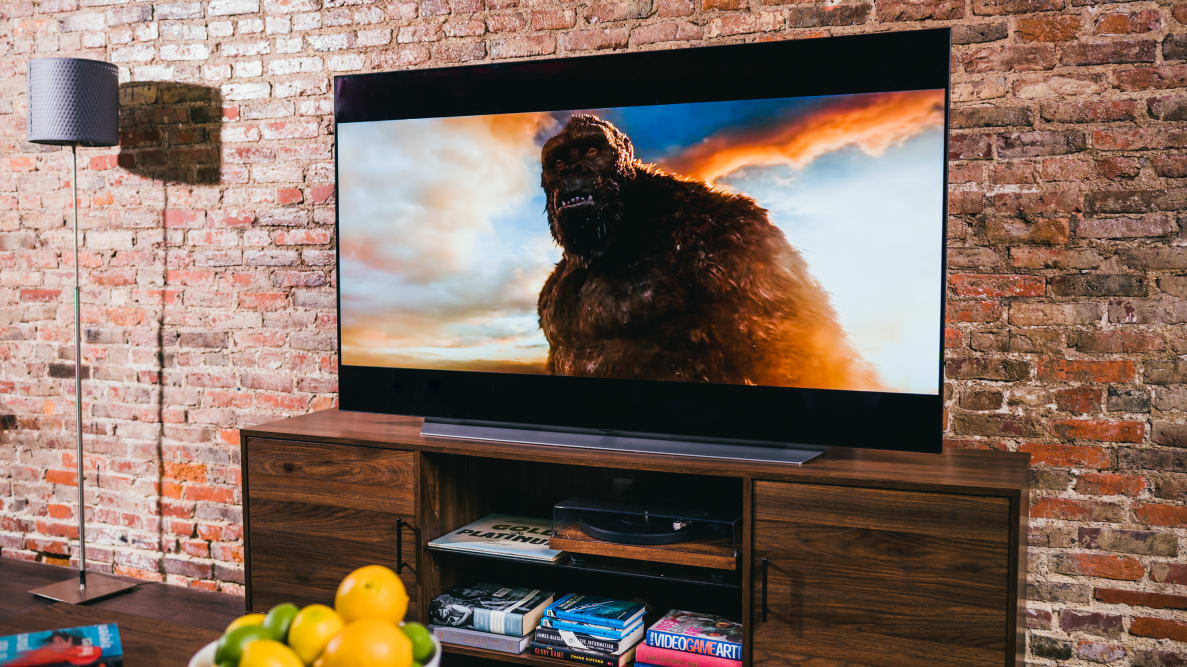Pros
-
Incredible contrast and color
-
Impressive array of features
-
Elegant design
Cons
-
Not a good fit for particularly bright rooms
Updated September 16, 2022: The new 2022 C-Series OLED, the C2, is an improved version of the C1 and is our pick for Best Overall TV. To find out more, check out our full review at the link above.
In addition to its peak performance, its beautiful design, and its laundry list of extra features, the LG C1 is just a flat-out better value than this year’s LG Gallery OLED (known as the “G1”). In fact, when it comes to picture quality, I’d wager that most folks wouldn’t notice much of a difference between the two.
The C1 is almost as good as the LG G1, but it’s also a better all-around package than most of the TVs we’ve tested, too. From its incredible performance to its future-facing features, the LG C1 is easily one of the best TVs we’ve ever seen.
About the LG C1 OLED TV series
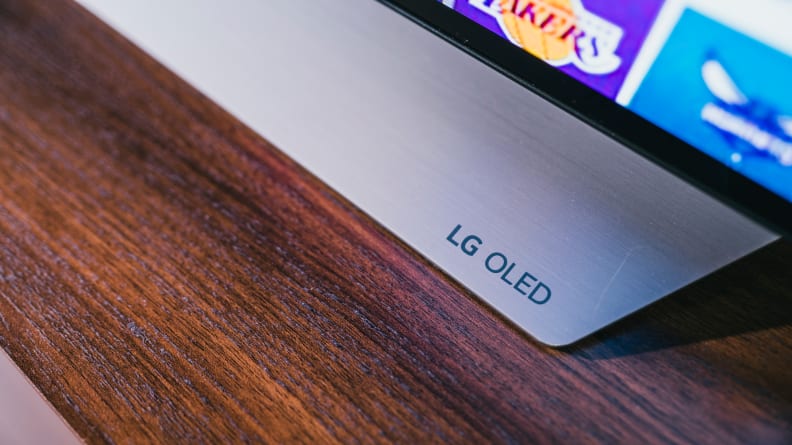
The LG C1 OLED is available in four sizes, including a compact, 48-inch model that we predict will be fairly popular.
The LG C1 OLED is available in four sizes, which is one more than you’ll find in the LG G1 series, the C1's pricier, flashier older sibling. While both series offer 55-, 65-, and 77-inch models, the LG C1 also comes in a compact 48-inch version. This TV has also seen excellent sales since its initial release, and we expect that to continue as LG rolls out its 2022 lineup.
Here’s how all of the sizes stack up:
- 48-inch (LG OLED48C1PUB), MSRP $1,499.99
- 55-inch (LG OLED55C1PUB), MSRP $1,799.99
- 65-inch (LG OLED65C1PUB), MSRP $2,499.99
- 77-inch (LG OLED77C1PUB), MSRP $3,799.99
As is the case with all OLED displays, the C1 does not rely on a backlight for illumination. Instead, each pixel in the display is self-illuminating. For this reason, we don’t expect there to be any difference in performance from one size to another.
Here are some of the key specs shared by all sizes in the LG C1 series:
- Resolution: 4K (3,840 x 2,160)
- Display type: OLED
- HDR support: Dolby Vision, HDR10, HLG
- Dolby Atmos: Yes
- eARC support: Yes
- Native refresh rate: 120Hz
- Smart platform: webOS
- Color: DCI-P3 color space/10-bit chroma resolution
- Processor: a9 Gen 4 AI Processor 4K
- Variable Refresh Rate (VRR): Yes
- Auto Low Latency Mode (ALLM): Yes
- Other features: Filmmaker Mode, Game Optimizer, Free Sync, G-Sync, Google Assistant, Alexa, Apple AirPlay 2
The C1 comes with webOS—the newest version of LG’s smart platform—pre-installed, along with a new iteration of the company’s motion-enabled Magic Remote.
One thing to keep in mind is that the C1 doesn’t feature LG’s new “OLED Evo” panel technology. For that feature, you’ll have to pony up for the LG G1. As our review points out, however, it might not make a big enough difference for you to justify the up-charge.
Performance data
Before testing each TV, we make sure the panel is on and receiving a continuous signal for at least 24 hours, allowing the pixels plenty of time to warm up. Our 65-inch LG C1 received this standard warm-up time before any readings were taken.
For SDR tests, we used LG’s “ISF Expert (Bright)” picture mode, and for HDR tests, we used LG’s “Cinema” picture mode. We’ve chosen these settings because of their accuracy, but results may vary depending on which picture mode is enabled. For example, you’re likely to experience a brighter picture on the TV’s “Vivid” picture mode, but this sacrifices color accuracy.
To get a sense of the TV’s average performance, we use a standard ANSI checkerboard pattern for most of our basic contrast tests. We also use white and black windows ranging from 2% to 90% to test how well the contrast holds up while displaying varying degrees of brightness.
Our peak brightness measurements are taken with sustained windows, so these figures represent the TV’s peak brightness over a sustained period of time. Specular highlights (like brief flashes of reflected light) might reach higher brightness levels, but not for a sustained period of time.
All of our tests are created with a QuantumData 780A signal generator and tabulated via Calman Ultimate. I'll expand on our test results throughout the review, but for now, here are some key takeaways:
• HDR contrast (brightness/black level): 234.6 nits/0.001 nits (ANSI checkerboard) • SDR contrast (brightness/black level): 152.5 nits/0.001 nits (ANSI checkerboard) • HDR peak brightness (sustained): 730.4 nits (20% white window) • HDR color gamut coverage (DCI-P3/10-bit): 97% • SDR color gamut coverage (Rec.709): 100%
Connectivity
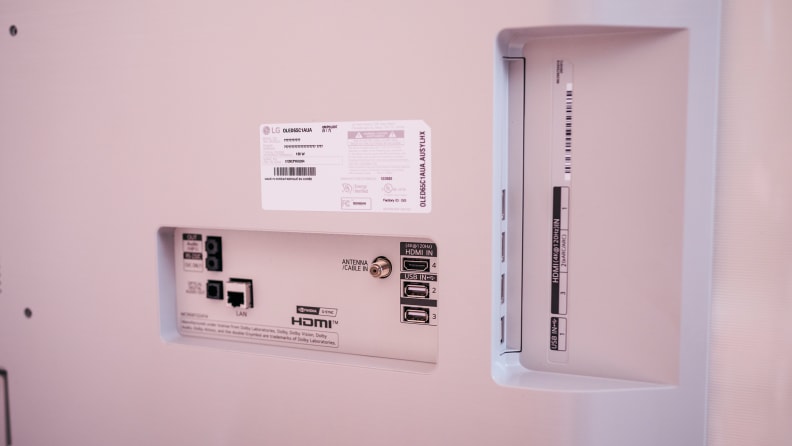
There are two cutouts on the back of the C1's panel that house its various inputs, including 4 HDMI 2.1 ports capable of displaying 4K content at 120fps.
When it comes to connectivity options, the LG C1 is loaded for bear. On the back of the TV’s panel you’ll find a couple of cutouts housing a selection of ports:
- 4x HDMI 2.1 (1x eARC)
- 3x USB 2.0
- RF connection (cable/antenna)
- Ethernet (LAN) input
- Digital audio output (optical)
- 3.5mm audio output (headphone jack)
What we like
Incredible contrast that only OLED can achieve
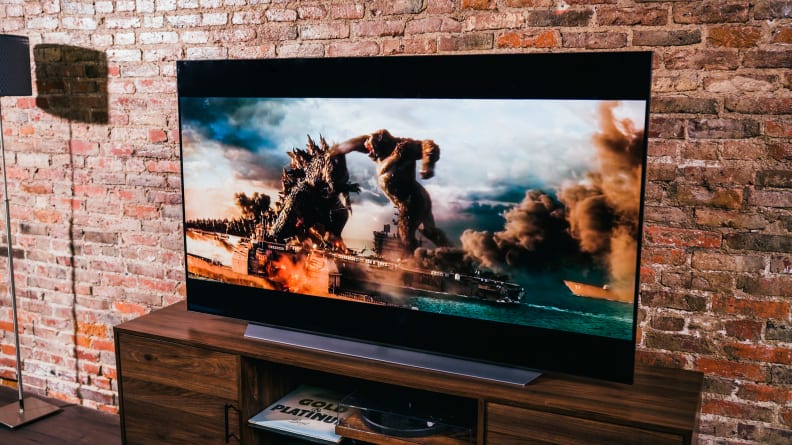
For full effect, an OLED TV's impressive contrast needs to be seen in person.
Seeing an OLED TV in person for the first time is a magical moment. These impressive displays are capable of producing perfect black levels on account of their self-emissive nature, and since contrast is a cornerstone of picture quality, the benefits of OLED are immediately apparent.
Like many LG OLEDs that came before it, the C1’s jaw-dropping contrast is its best quality. With perfect black levels, even the darkest scenes are draped in detail; shadow delineation is precise and, impressively, there’s almost no light bloom to speak of when bright picture elements meet darkness.
When it comes to brightness, the LG C1 has plenty to offer, at least as far as OLEDs go. It joins the ranks of the Sony A90J and the LG G1 as one of the three brightest OLEDs we’ve ever tested, settling into the 700- to 800-nit range during HDR, just as those TVs did. These are measurements of sustained brightness, and you can expect to see a bit more “pop” for short-lived specular highlights (small reflections of light, for example).
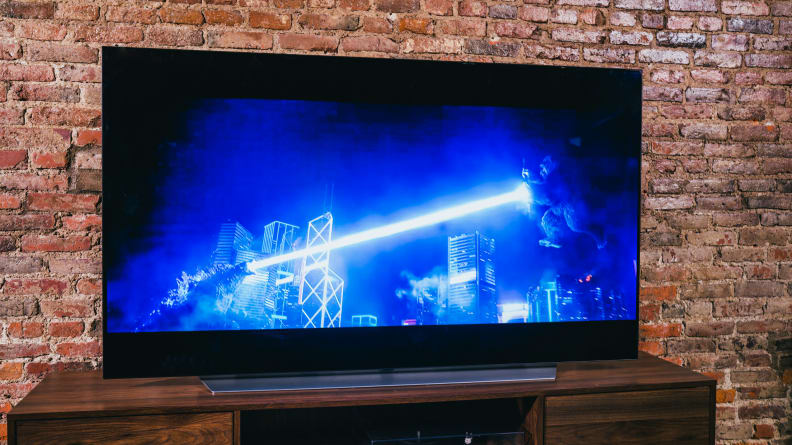
In HDR, the C1 tops out at around 700-750 nits of sustained brightness—very close to the figures we measured on the LG G1 earlier this month.
In fact, the LG C1’s overall contrast doesn’t look that much different than that of the LG G1, and as you’ll recall, one of the main draws of the G1 is supposed to be the TV’s “OLED Evo” panel, which LG dubbed “the second evolution of OLED TV.” The OLED Evo panel was reported to pack a brighter punch, and while it is somewhat brighter than the C1 on average, we don’t think most folks will notice a difference.
Compared to the high-octane brightness of a quantum dot LED TV, an OLED TV’s performance is more restrained; it’s more subtle realism over dazzling psychedelia. You might find that, for some content, the vividness of a quantum dot LED TV is more desirable, but pound for pound, the C1’s picture is more dialed-in than all of the quantum dot LED TVs we’ve tested for 2021 (the best of which is the Samsung QN90A QLED TV).
Rich, voluminous color across content
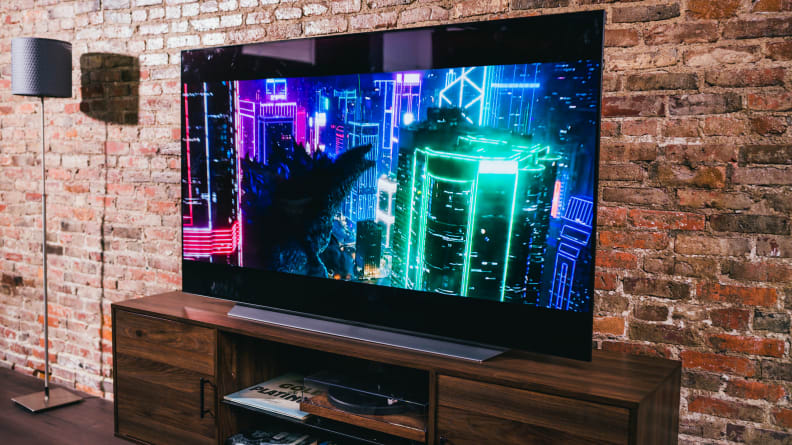
The LG C1 covers 100% of the Rec.709 color gamut and 97% of the HDR color gamut (DCI-P3).
Almost as impressive as the C1’s contrast is its color production, which is among the best we’ve seen in 2021. SDR content (like cable TV, HD Blu-rays, and the majority of streaming content) looks great on the C1, as the TV is capable of 100% saturation of the SDR color standard (Rec.709). Even its out-of-the-box “ISF Expert” picture settings produce a nigh-perfect picture—no additional tinkering required.
Content mastered for HDR (High Dynamic Range) is sure to blow you away, too; our lab tests indicate that the C1 is capable of covering 97% of the HDR color gamut (DCI-P3). It’s not quite as well-saturated as the LG G1, which covers roughly 99% of HDR color, but that might have something to do with the G1’s Evo panel, which uses new, altogether different materials and gets marginally brighter in HDR. Because the G1’s added brightness happens on the subpixel level, its benefits can be measured in color saturation, too, not just in overall picture luminance.
That said, even the most discerning eye likely won’t be able to tell the difference between the G1 and the C1, all conditions being equal. Perhaps LG’s next evolution of OLED will outpace the company’s standard version of the technology, but from where we sit, the C1 is almost every bit as impressive from a performance standpoint as the more-premium LG G1.
Brimming with future-facing features

The LG C1 is brimming with extra features and enhancements, including something called "Game Optimizer" that seeks to organize all gaming-related settings in a single, easy-to-access menu.
One of the benefits of investing in a TV of this caliber is the peace of mind of knowing that, for the most part, you’re probably going to be covered when it comes to the latest A/V formats and features. The LG C1 is no exception—it’s positively packed with extras to justify its premium cost.
Let’s start with its various compatibilities. The C1 supports both Dolby Vision (the HDR format with the most stringent benchmarks) as well as HDR10.
Gamers needn’t worry about the C1 facing obsoletion anytime soon, as it’s well equipped to support next-generation gaming for the foreseeable future. It supports both Auto Low Latency Mode (which automatically switches the C1 into its gaming mode when a console is detected) as well as Variable Refresh Rate (VRR), which prevents screen tearing and other visual artifacts during gameplay (you can read more about VRR and ALLM in our guide).
In addition, the C1 offers a refresh rate of 120Hz and supports video at 120 frames per second (fps) in 4K resolution across all of its HDMI ports. Simply put, the C1 is one of the best TVs you can pair with an Xbox Series X or a PlayStation 5.
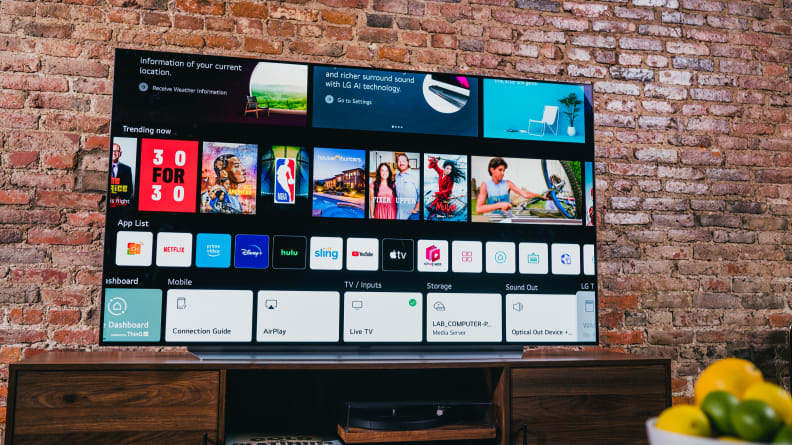
The sixth iteration of LG's webOS introduces a full-sized home screen.
Like other LG TVs for 2021, the C1 puts all of its gaming-related settings right at the user’s fingertips with a feature the company refers to as “Game Optimizer.” Rather than bury all of the various gaming settings in separate submenus, Game Optimizer puts them all in one place that can be easily accessed at any time. From the Game Optimizer menu, you’ll find most of the TV’s motion enhancement settings, as well as various picture presets for different genres of games (RPG, FPS, and RTS). There’s also a toggle switch in the Game Optimizer menu that reduces blue light in order to curb eye strain. While we’re just beginning to take some of Game Optimizer’s finely tuned controls out for a spin, it really is a breath of fresh air to have all of these options in one place, just a few clicks away.
The C1 comes with the latest iteration of webOS in tow, and it looks a bit different this year. Rather than cordoning off the entire app menu to a bar at the bottom of the screen like previous versions, the newest iteration puts all of the platform’s navigational experience on its own home screen—more in line with its contemporaries.
Some folks might understandably find the shift to be jarring, but I don’t expect this response from those who’ve never used webOS before. We found the new webOS experience to be just fine, with easy-to-navigate menus and zippy response times. If you’re still wary about webOS, you could always replace it with an external streaming device.
Posh design that sets itself apart from the crowd
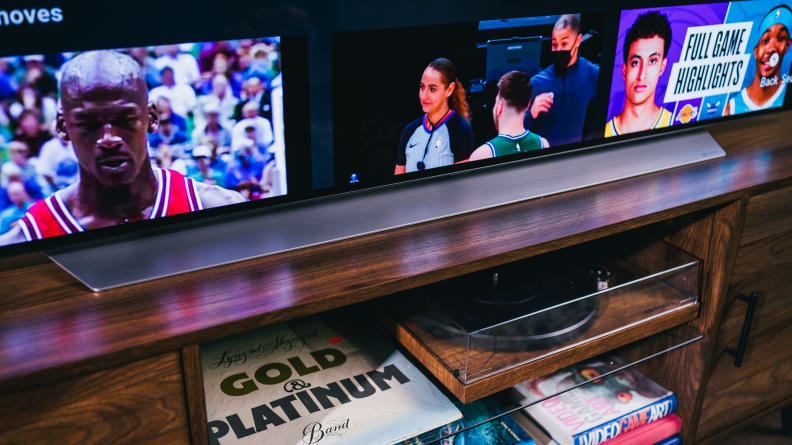
The TV's overall design is elegant without calling too much attention to itself.
Once you get past its jaw-dropping contrast, the second thing you’ll likely notice about any given OLED TV is its thin, futuristic design. Since they first hit the shelves several years back, LG OLEDs have earned a reputation for being particularly pretty, what with their razor-thin profile and elegant stand design.

Up close, the C1's stand appears to gently lift the TV's panel above the tabletop.
The C1 continues this fine tradition with an elegant, thoughtful profile that’s sure to do your living room proud. Even the thickest part of its panel (where its internals are housed) is narrow compared to most backlit LED TVs, and at its thinnest, the C1’s panel is no thicker than a smartphone.
The panel is cradled by a textured, silver slab that acts as its stand, with most of the anchoring being done behind the scenes around the back of the TV. From the front, it looks as though this slightly curved slab is gently lifting the C1 up off its surface. Despite not calling attention to itself, I can’t help but admire it.
What we don’t like
If you want to be blasted by brightness, look elsewhere
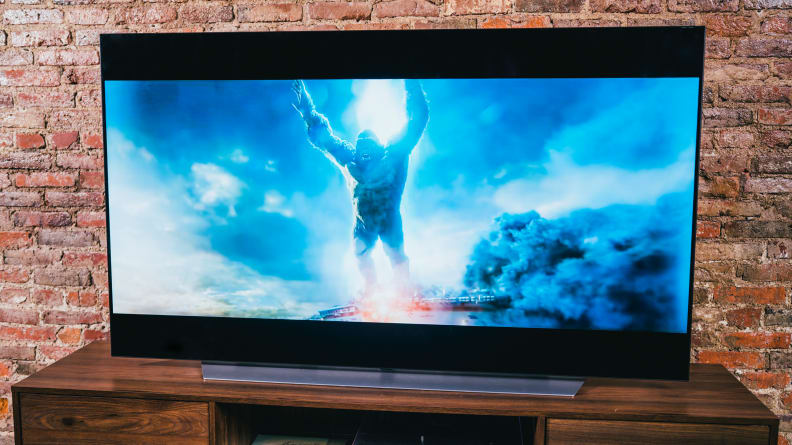
Although it's among the brightest OLEDs we've ever tested, the C1—and OLED TVs in general—can't get as bright as traditional LCD/LED TVs.
OLED TVs have come a long way in the brightness department but still pale in comparison to their souped-up, quantum dot-enhanced LED competitors. While traditional LCD/LED TVs aren’t capable of producing perfect black levels, OLEDs aren’t equipped to reach the sky-high brightness levels of high-end LED TVs like the Samsung QN90A.
To be fair, the C1 is plenty bright for all but the brightest viewing conditions. And if OLED is what you’re after, the C1, G1, and Sony A90J represent the brightest options in this class (with the G1 and A90J eclipsing the C1 ever so slightly). The C1 is the most affordable of these three, which makes it an attractive choice, but if your living room gets its fair share of sunlight, you might be better off shopping for an LED TV.
OLED tech is still a pricey proposition
Though more affordable than the stupendously pricey G1, the C1 is nevertheless on the upper end of the spectrum of TV prices in 2021. To be fair, it justifies its cost by being one of the best-performing TVs we’ve ever tested and by offering an array of cutting-edge features that will keep the C1 near the top of its class for years to come.
Still, its price tag is a tough pill to swallow. For as much as these incredible TVs have come down in price over the last few years, there’s still a sizable gap between the cost of the LG C1 and most second-tier flagship TVs. If you can’t bring yourself to invest in a 55- or 65-inch C1, one option at your disposal is to go for the 48-inch model, whose $1,500 price tag is much easier to digest. It’s a bit smaller, but it’s a nice option to have in your back pocket if you want a taste of the OLED lifestyle.
No DTS support limits Blu-ray options
After our initial review, we discovered something we didn't expect: LG has dropped support for DTS in its TVs made after 2020. This means that, if you have a large Blu-ray collection with DTS tracks, you'll need to plug your player into an A/V receiver or supported soundbar to decode the full audio track, rather than your TV directly. Since we expect most folks with this kind of setup to have a properly dedicated audio device anyway, we don't think this will be much of an issue for most prospective buyers (LG obviously didn't). But it's something to note if Blu-ray is your preferred video experience.
Should you buy it?
Yes—it’s one of the best TVs of the year
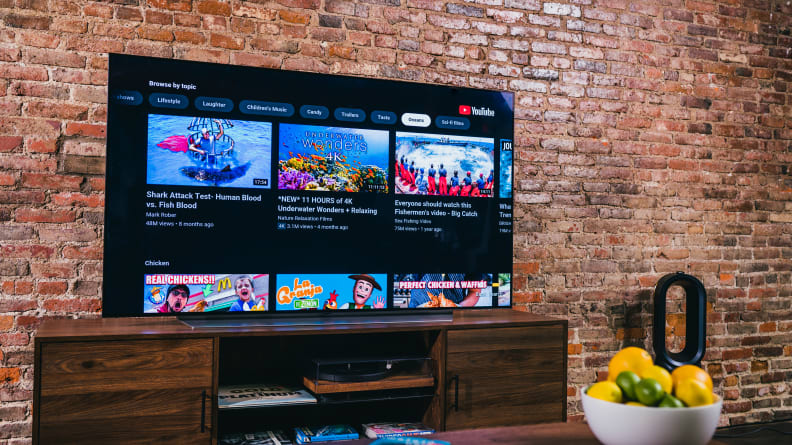
The LG C1 is one of the best TVs we've ever tested.
From what we’ve seen so far this year, the only TVs that match the LG C1 in features and eclipse it in performance are the LG G1 and the Sony A90J, but both of these OLED class competitors are only marginally better despite costing significantly more. And, in the case of the LG G1, you’ll need to buy a stand separately (for another $100) if you’re not planning on wall-mounting it.
For that reason, we think the C1 is a better choice for most folks than the G1 or the Sony A90J. All three are incredible, but only the C1 carries a price that, while steep, won’t make you faint. Plus, while both of its closest competitors are offered in three larger sizes, the C1 is the only one of the trio that’s available in a relatively affordable, 48-inch variant.
If you’re angling for a TV with blisteringly high brightness levels, we recommend taking a look at the Samsung QN90A, a high-end quantum dot TV that packs a bright, colorful punch, despite not matching the C1 in every other performance category.
It’s still early in the year, but it’s hard to see another TV coming along that performs as well as the LG C1 without costing far more. It’s one of the best TVs we’ve ever tested, and carries on in the award-winning tradition of previous LG OLED TVs that wear the company’s “C” emblem.
Meet the testers
Michael Desjardin graduated from Emerson College after having studied media production and screenwriting. He specializes in tech for Reviewed, but also loves film criticism, weird ambient music, cooking, and food in general.
Jonathan Chan currently serves as the Lab Manager at Reviewed. If you clean with it, it's likely that Jon oversees its testing. Since joining the Reviewed in 2012, Jon has helped launch the company's efforts in reviewing laptops, vacuums, and outdoor gear. He thinks he's a pretty big deal. In the pursuit of data, he's plunged his hands into freezing cold water, consented to be literally dragged through the mud, and watched paint dry. Jon demands you have a nice day.
Checking our work.
Our team is here to help you buy the best stuff and love what you own. Our writers, editors, and experts obsess over the products we cover to make sure you're confident and satisfied. Have a different opinion about something we recommend? Email us and we'll compare notes.
Shoot us an email

